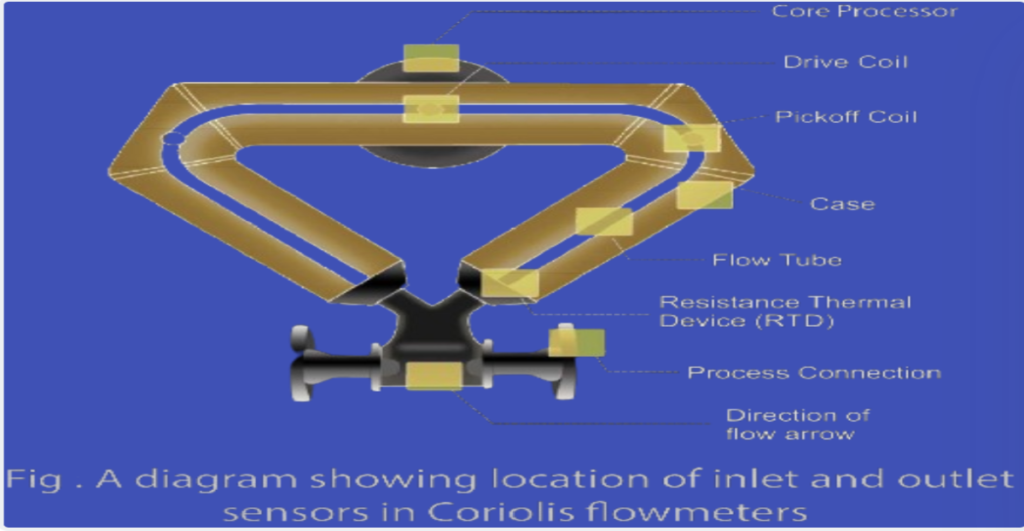A Coriolis flow meter is a type of flow meter that measures the mass flow rate of a fluid (liquid or gas) by using the Coriolis effect. The Coriolis effect is a phenomenon in which a fluid’s mass flow rate is measured by detecting the twisting force (torque) created by the fluid’s motion.

Coriolis Flow Meter Working Principle.
Here’s how it works:
- The Coriolis flow meter consists of a tube that is vibrated at a specific frequency.
- When a fluid flows through the tube, it creates a twisting force (torque) due to the Coriolis effect.
- The torque is directly proportional to the mass flow rate of the fluid.
- The Coriolis flow meter measures the torque and converts it into a mass flow rate signal.
Coriolis flow meters are highly accurate and reliable, and they offer several advantages, including:
- High accuracy (typically ±0.5% of reading).
- Direct mass flow measurement (no need for density compensation).
- Low maintenance (no moving parts).
- High reliability.
- Wide range of applications (liquids, gases, and slurries).
- Compact design.
Coriolis flow meters are commonly used in various industries, including:
- Chemical processing.
- Oil and gas.
- Power generation.
- Food and beverage.
- Pharmaceutical.
- Aerospace.
Some common applications include:
- Flow measurement in pipelines.
- Custody transfer.
- Process control.
- Inventory management.
- Leak detection.
- Energy management.
Coriolis flow meters are highly accurate and reliable instruments for measuring mass flow rate, and they offer several advantages and applications in various industries.
What is Coriolis Effect?
The Coriolis flow meter operates on the principle of the Coriolis effect, a phenomenon first described by French scientist Gaspard-Gustave de Coriolis in the 19th century. This effect manifests as a deflection of moving objects, such as fluids, on a rotating frame of reference. In the context of flow measurement, the Coriolis effect causes a fluid flowing through a vibrating tube to exhibit a twisting or bending motion, proportional to its mass flow rate.